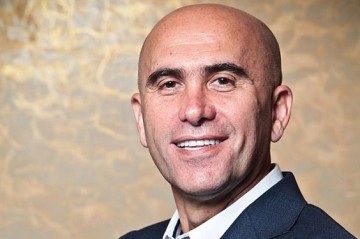 Beancounters at Wakefield Research have asked 250 senior executives at IT companies, value-added resellers and cloud providers and found that 97 percent believe offering cloud solutions will grow their business, and 96 percent believe cloud-based solutions are also more profitable.
Beancounters at Wakefield Research have asked 250 senior executives at IT companies, value-added resellers and cloud providers and found that 97 percent believe offering cloud solutions will grow their business, and 96 percent believe cloud-based solutions are also more profitable.
The survey was conducted on behalf of Concur and shows VARs that partner with cloud providers are more profitable. Writing on Concour’s blog Sachin Vora said that while it is clear that cloud-based solutions are integral to the future of business, the speed to market for new partners is key in a fast moving technology landscape.
“As channel partners evaluate and embrace available cloud solutions, some partnership models may have more advantages than others when it comes to building a cloud practice and being profitable. In a traditional partnership model like resell, channel partners are expected to build capability and competency across all aspects of a customer lifecycle – marketing, pre-sales, sales, implementation, support and post-sales services.”
While this model has long-term advantages, in the fast-moving cloud/SaaS space, the model limits partner’s expansion and adoption of new emerging technologies. In this scenario, a hybrid co-sell model helps the channel partner leverage their existing customer expertise without the immediate burden of investing in high-cost technical and post-sales capacity.
By implementing a co-sell referral model with a cloud-solution provider, partners can focus on being a trusted business advisor without major investment in technical sales resources.
Time spent on outside tasks such as training, marketing or sales is left to the solution provider so channel partners can focus on the success of their customers and on growing their business. In fact, according to the survey, every single company has expanded their client base since adopting a co-seller model, with average growth of 10 percent .
The survey also found that 77 percent of companies which offer a co-seller model have seen a direct or indirect profit increase since they began using it.
More than 90 percent of companies believe traditional reseller models require significantly more time and financial commitment than co-seller models.
Among those companies surveyed, the top reasons for adopting the co-seller model are:
To free up employees’ time to focus on other tasks (63 percent).
To use more highly skilled sales and marketing support than their company has on staff (59 percent).
To avoid having to train employees on a reseller model (53 percent).
To add more perceived value to their customer base (49 percent).
Knowing how quickly the market is shifting and leaning more and more on cloud, now is the time for partners to set themselves up for long-term success and start solving their customers’ problems today. Almost all companies (97 percent) know their customers struggle with accounts payable processes and expense management systems, and 90 per cent of companies believe this is an untapped profitability source. By helping customers automate this workload, partners can drive immediate value by improving their bottom line, increasing profitability and simplifying an inefficient process.
In July of last year, Concur launched its co-sell referral channel program for partners interested in expanding their cloud practices with travel, expense and invoice cloud solutions. Since the launch, more than 300 partners have joined the programme.
 UK companies are facing a cyber security staff shortage and companies fear they are being exposed to hacker attacks.
UK companies are facing a cyber security staff shortage and companies fear they are being exposed to hacker attacks.


















